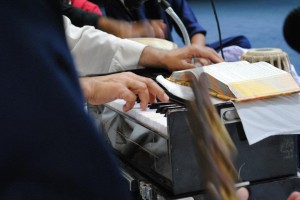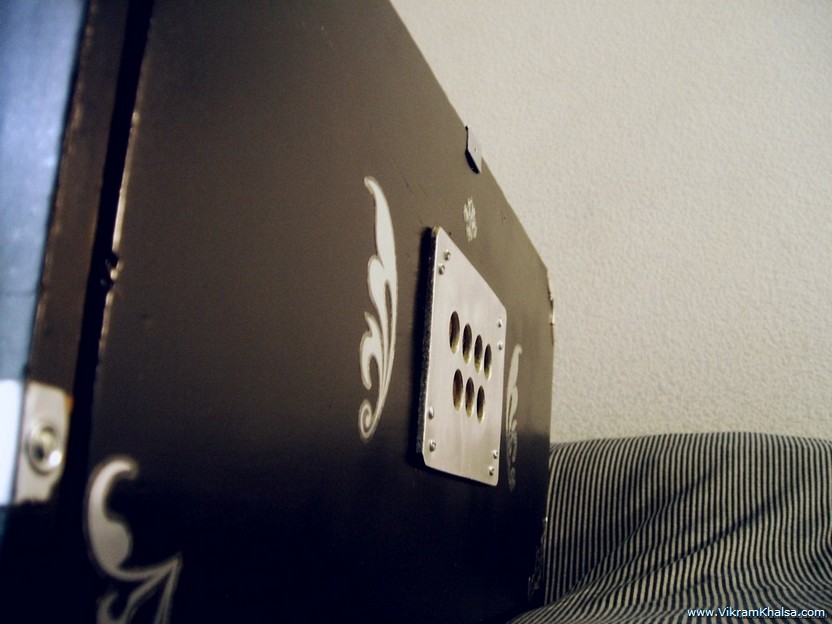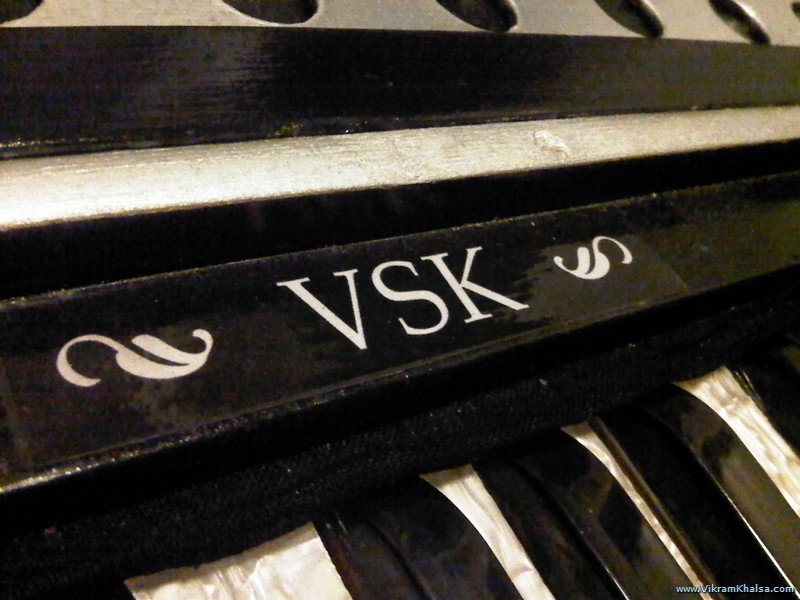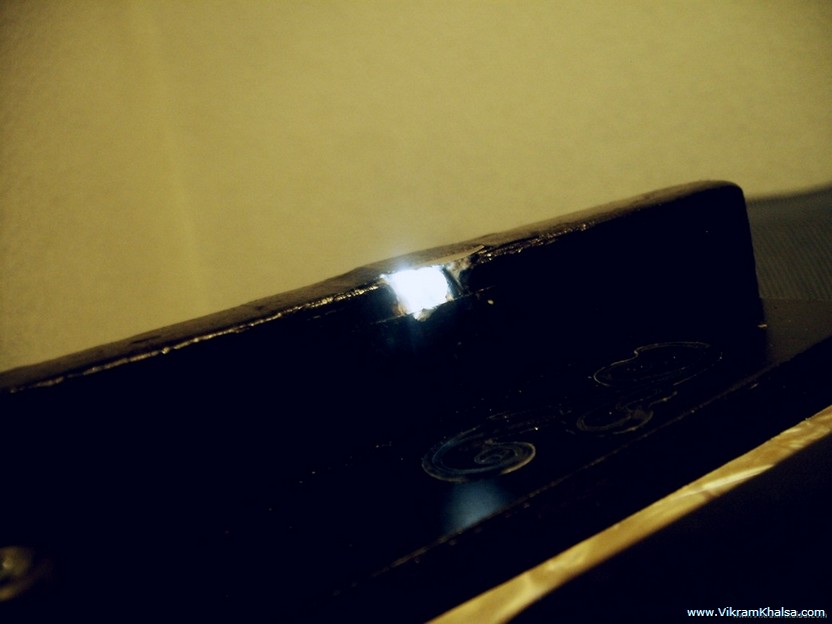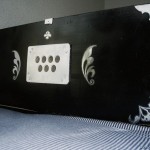Qualities of a Keertani
Almost anyone can learn how to play and sing a shabad with a harmonium – but there is a lot more than that to doing keertan. Once I was at a divaan listening to Bhai Kultar Singh Ji doing keertan and vichaar. Bhai Kultar Singh is the son of well known raagi Bhai Avtar Singh, who did keertan in the puratan Gurmat Sangeet style. Bhai Sahib and his family have preserved musical traditions, compositions, raags and taals since the time of Guru Sahib and passed them down from generation to generation. At this divaan, Bhai Sahib shared some bits of wisdom with us that he learned from his father before he passed away. I have shared his points below, along with some of my own personal experiences and ideas. Keep in mind these aren’t official requirements written anywhere, they are just ideal guidelines that every keertani should follow.
1. A keertani should memorize the shabad they are going to do.
Although modern technology has been very helpful, I feel like it has also increased our dependence on external sources and caused our memories to become weaker. If our phone’s battery dies all of the sudden, we don’t know the next line of our shabad! If we have the shabad memorized, we won’t be dependent on a notebook, Amrit Kirtan Pothi, iPad, or other aid to help us. This means that we can sing or recite the shabad anytime, anywhere – and we wouldn’t be limited to having a source on us in order to do it. It may even help us focus because we wouldn’t have to keep opening our eyes and looking for the next line. Another point I realized was that in order to learn a shabad by heart, we would have to read it many times over and over again. This abhyaas (practice) and jaap will help the shabad ‘settle’ inside us. We get the added benefit of reading more bani and we are more likely to understand it this way too.
2. A keertani should know the meanings of the shabad.
We may think this is implied, or obvious; but you might be surprised how many of us don’t know the meanings of the shabads we are doing. Usually when young children are doing kirtan they don’t know what the shabad means, but it happens with adults too. It is our responsibility to teach and explain the meanings to kids and to learn them ourselves as well. Understanding the meanings of a shabad will also help us with correct pronunciation and bisraams (pauses). These can be very important, as incorrect ucharan and bisraams can totally change the meaning of a line. If we don’t try to understand the shabad before hand, we may assume some incorrect definitions, and make mistakes like doing Waheguru Simran where it does not apply or is completely irrelevant.
Once I was sitting in a large kirtan divaan, and a prominent keertani was singing the shabad ਹਮ ਵਣਜਾਰੇ ਰਾਮ ਕੇ ||(I am the merchant/trader of the Lord). When he got to the first half of the line ਹੋਰੁ ਵਣਜੁ ਕਰਹਿ ਵਾਪਾਰੀਏ ਅਨੰਤ ਤਰੰਗੀ ਦੁਖੁ ਮਾਇਆ ||, he started doing Waheguru Simran loudly and quickly. Apparently at a glance he took it to mean “Oh Traders – trade more! (in the Name of the Lord) ” However, the actual meaning of the complete line is “Those traders who trade in other merchandise, are caught up in the endless waves of the pain of Maya.” As you can see, this is a huge mistake and it also misleads the sangat.. and this was a professional Raagi. Therefore, it is very important to understand the meanings of what you’re going to sing. If you don’t, how can you express the message and pass it on?
3. A keertani should know about raag/sur/taal.
Although the most important thing is singing Gurbani from your heart, musical understanding is also quite significant. When you are doing keertan alone it may not really matter, but in sangat it can make a difference. It is important for a keertani to understand taal, otherwise there can be miscommunication and mistakes between them and the tabla. The disruption of the beat and tabla can be distracting for the listeners. Singing off-key can also be distracting and can detract from the delivery of the message. Knowing about raags is definitely important as Guru Sahib wrote shabads in raag for a reason. In the most ideal scenario, a shabad would be sung in the prescribed raag, at the right time to help create the proper mood for maximum effect.
4. A keertani should be able to express the emotion of the shabad.
This follows from the above point. I don’t think this can be taught, but the most genuine way to express the shabad would be to 1) Know and understand the meanings, 2) Know about the raag/time and use that to create the mood 3) Actually feel the meaning and apply it to yourself and the world around you. If we do keertan and sing something because we genuinely mean it, the message will be effectively passed to the sangat too.
We used to have a keertan night every other week when I was studying at UC Davis. I remember once I was really stressed because there was too much going at once and I didn’t know how to deal with it all. I had homework, labs, midterms, a flight with no ride to the airport, and it seemed like everything was going to go wrong. I decided to do the shabad:
ਅਬ ਹਮ ਚਲੀ ਠਾਕੁਰ ਪਹਿ ਹਾਰਿ ||
ab ham chalee thhaakur paih haar ||
Now, I have come, exhausted, to my Lord and Master.
ਜਬ ਹਮ ਸਰਣਿ ਪ੍ਰਭੂ ਕੀ ਆਈ ਰਾਖੁ ਪ੍ਰਭੂ ਭਾਵੈ ਮਾਰਿ ||੧|| ਰਹਾਉ ||
jab ham saran prabhoo kee aaee raakh prabhoo bhaavai maar ||1|| rehaao ||
Now that I have come seeking Your Sanctuary, God, please, either save me, or kill me.
That night I did the shabad because I really meant it. I had actually given up and surrendered, and was asking Waheguru to save me Himself, as He wished. Although I was just asking from a wordy perspective, it was still effective. I was so amazed and overwhelmed with gratitude when everything fell into place right after the Kirtan. One after another all my problems were resolved! I have no knowledge or understanding, but Guru Sahib blessed me with His mercy and I experienced firsthand the power of Gurbani when read and sung with true conviction and genuine feeling.
5. A keertani should be a Nitnemi.
Bhai Sahib further elaborated on this by saying the person should be a Gursikh – “For example, they shouldn’t be drinking the night before and then doing kirtan the next day.” A Nitnemi Gursikh means someone who follows their daily routine, does their paath regularly and follows rehat. Obviously our keertan would be more effective if we follow a high spiritual jeevan (lifestyle). A non-gursikh could possibly do wonderful kirtan too, but it wouldn’t be the same. I’ve been told by many Gursikhs that those who do kirtan seva should make sure they are following the ideal lifestyle (doing simran, seva, regular amritvela, etc).
A respected elder Gursikh once told me that when we are leading Naam Simran and keertan in sangat, we are distributing the wealth of Naam Simran from our own personal account. He said we don’t really have the right to be “giving out” Simran, or leading it, if we don’t do any Simran of our own, because we would almost be deceiving the sangat. He was basically saying that our actions in public should reflect our daily private behavior. If we are going to lead the sangat in Simran, we should at least do that much simran on our own time at home before.
In my opinion this last point is the most important of them all. The others can surely improve our keertan, but they aren’t enough by themselves if we don’t follow a Gursikh lifestyle. However, if we have rehat and ucha jeevan, it has the potential make up for whatever we lack in the other qualities.
——————————————–
There are many more qualities a Keertani should have, but I think these are some good goals and guidelines for all of us. I can’t say that I follow all of these yet myself, but I am going to try my best to implement them one by one. Once again, please forgive me if I have hurt or offended anyone, I just wanted to share what I learned with everyone else. Comments and input are appreciated, as always. Lets try to learn from one another and improve ourselves!
Posted in Sikhi and tagged akhand, banee, gurbani, gurmat, kaur, keertan, khalsa, kirtan, paath, path, raag, sangeet, sikh, sing, singhwith 4 comments.
isangat.org Android Application
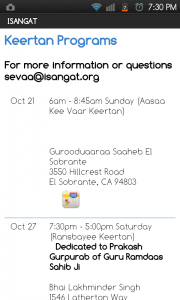 As viewers may know, I love creating things, learning new stuff, and making things convenient. So I decided to try my hand at making an app for my android phone. This is my first app, so its very simple but it gets the job done. The app basically displays a list of Kirtan programs in the bay area with times and addresses from www.isangat.org. This is a convenient way to check from programs from your phone without having to go to the website. If you don’t have a data plan or rely only on wifi, this app also has the built in feature to save the information so that when you open it later without an internet connection you can still see the events. Obviously it will not update if there are any changes unless your internet connection is active. Another cool thing about having it as an app is that you don’t have to look at the website and type the information into your gps or maps app. You should be able to just click the address and view it in maps. Hopefully I will learn how to add more advanced features and make more apps as well. I hope you like it! If you have any issues don’t hesitate to contact me.
As viewers may know, I love creating things, learning new stuff, and making things convenient. So I decided to try my hand at making an app for my android phone. This is my first app, so its very simple but it gets the job done. The app basically displays a list of Kirtan programs in the bay area with times and addresses from www.isangat.org. This is a convenient way to check from programs from your phone without having to go to the website. If you don’t have a data plan or rely only on wifi, this app also has the built in feature to save the information so that when you open it later without an internet connection you can still see the events. Obviously it will not update if there are any changes unless your internet connection is active. Another cool thing about having it as an app is that you don’t have to look at the website and type the information into your gps or maps app. You should be able to just click the address and view it in maps. Hopefully I will learn how to add more advanced features and make more apps as well. I hope you like it! If you have any issues don’t hesitate to contact me.
Right Click Here or Long Press and choose (Save Link As..) to Download. You can either download the file on your computer and put it in your SD card, or just open this page in your mobile browser and download it directly onto your phone. Then just open the file to install.
Note: You must have installation of non-market applications allowed. To do this on your device go to Settings>Applications> Check “Unknown Sources”
———-UPDATE—– May 14th, 2016 ———-
I have officially rebuilt this app from the ground up, optimized for android Kitkat/Lollipop and above. It is now officially available on the Google Play Store at the following link: https://play.google.com/store/apps/details?id=com.vikramkhalsa.isangat
I have also added programs from www.ekhalsa.com to the app and will be adding more sources and features in the future. All of the updates will now be available directly in the play store.
Posted in Randomness and tagged android, application, events, gurbani, keertan, kirtan, mobile, sikhiwith no comments yet.
Customized VSK Ultimate Vaja
With LED lit keyboard and built-in phone stand.
Lately, I’ve been thinking of many ideas to customize, improve, and add features to my harmonium. I recently came up with the idea of adding LED lights for the keyboard to assist in seeing the keys while playing in the dark. Although this wasn’t a much needed feature I felt it could have some practical benefits for some people and it definitely looks cool. After putting the lights in I realized I didn’t really like the look of my vaja (it was pretty old and worn out with plenty of cuts and scratches on the paint) and the wiring/LED setup didn’t look very nice either. So I decided to “clean it up” a little and make the electrical work more hidden. I figured while doing this I might as well customize the look of my vaja and give it a makeover. I went with my favorite black and silver theme, and tried to make it look more elegant too. There is no visible wiring, an easily accessible battery holder, and a push-button switch built into the wood. My last addition was a hidden iphone/PDA stand which rotates out when you need it. This was the result of my Spring Break:
What it used to look like:
The process and detailed pictures:
Posted in Stuff and tagged custom, harmonium, kirtan, LED, vskwith 3 comments.
